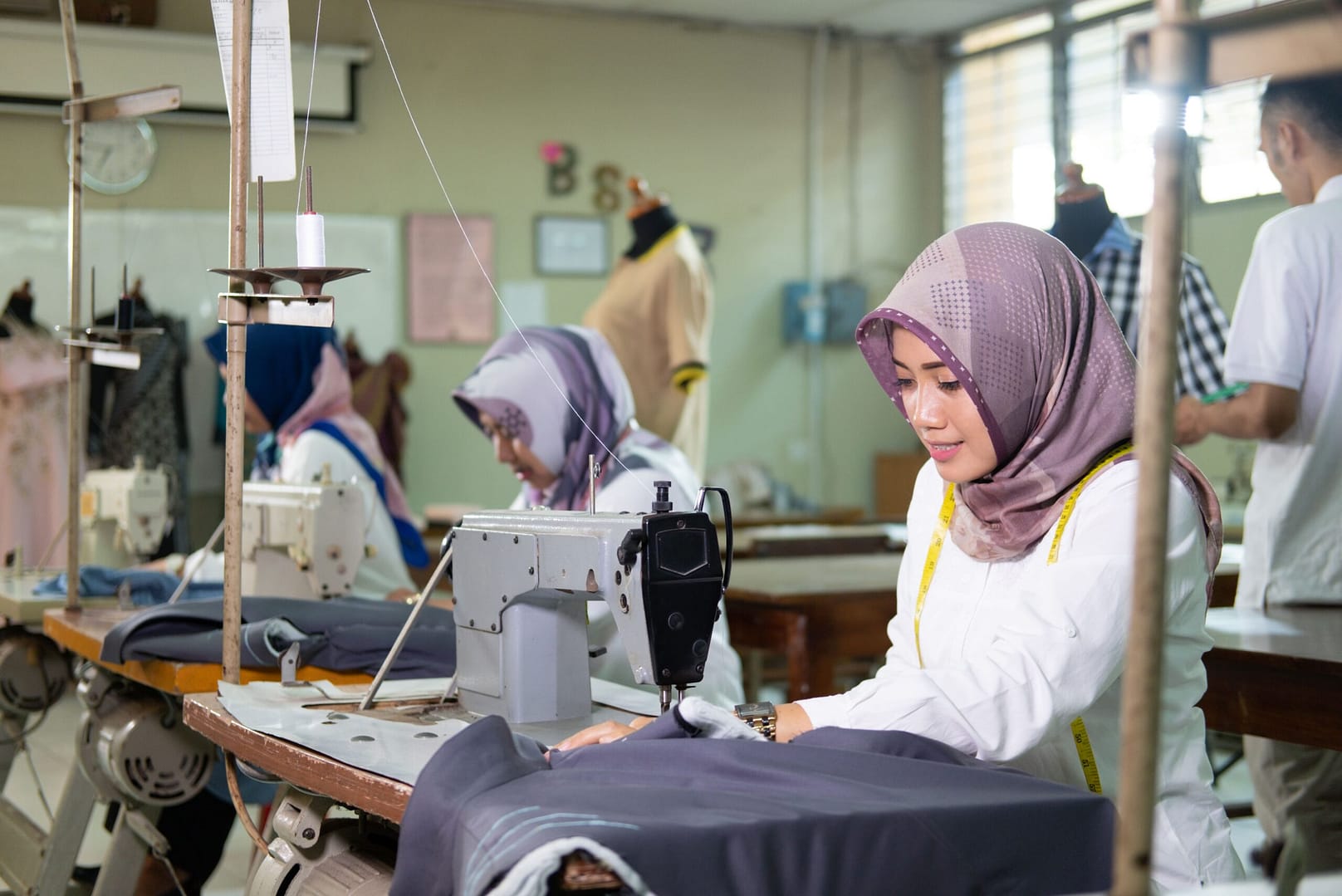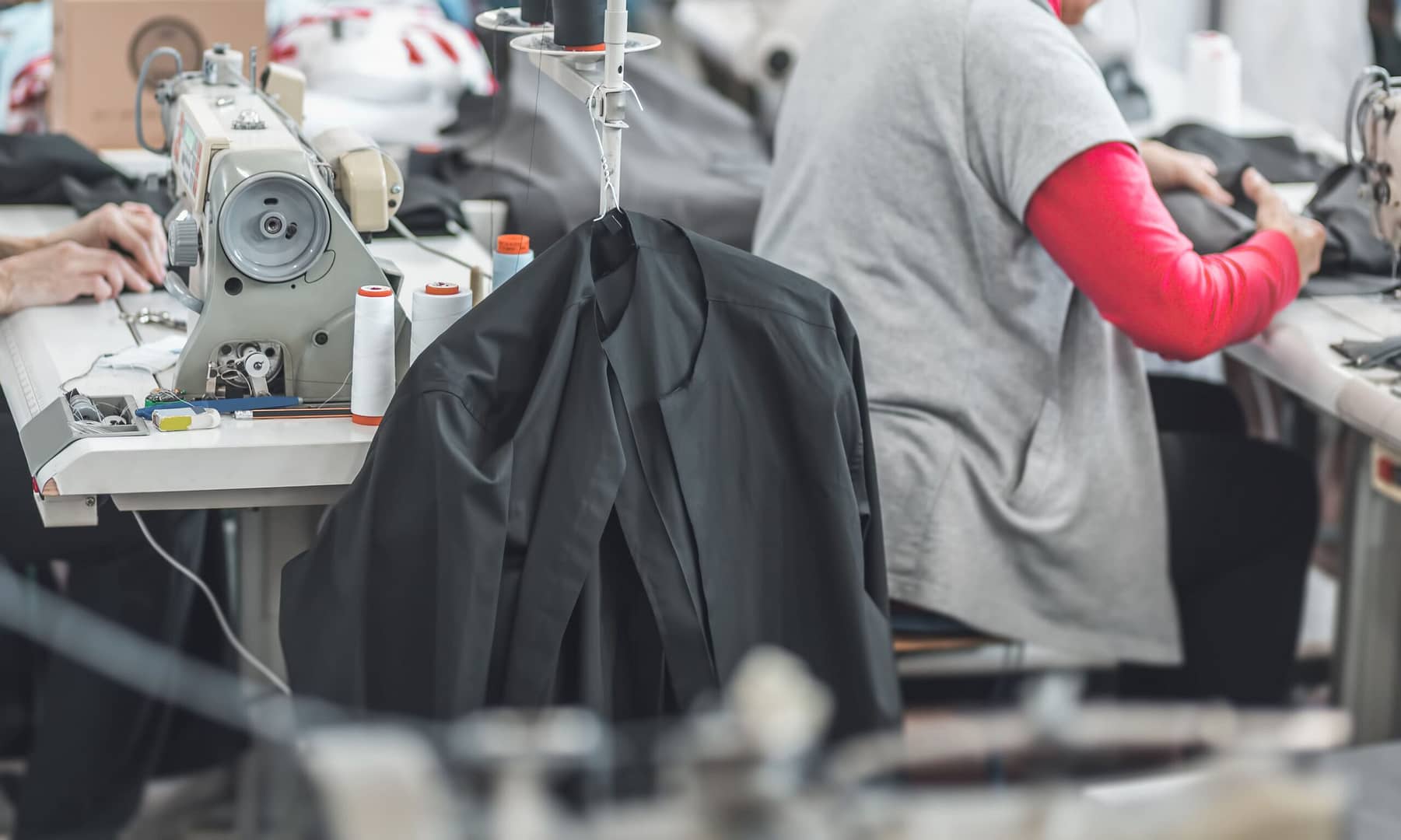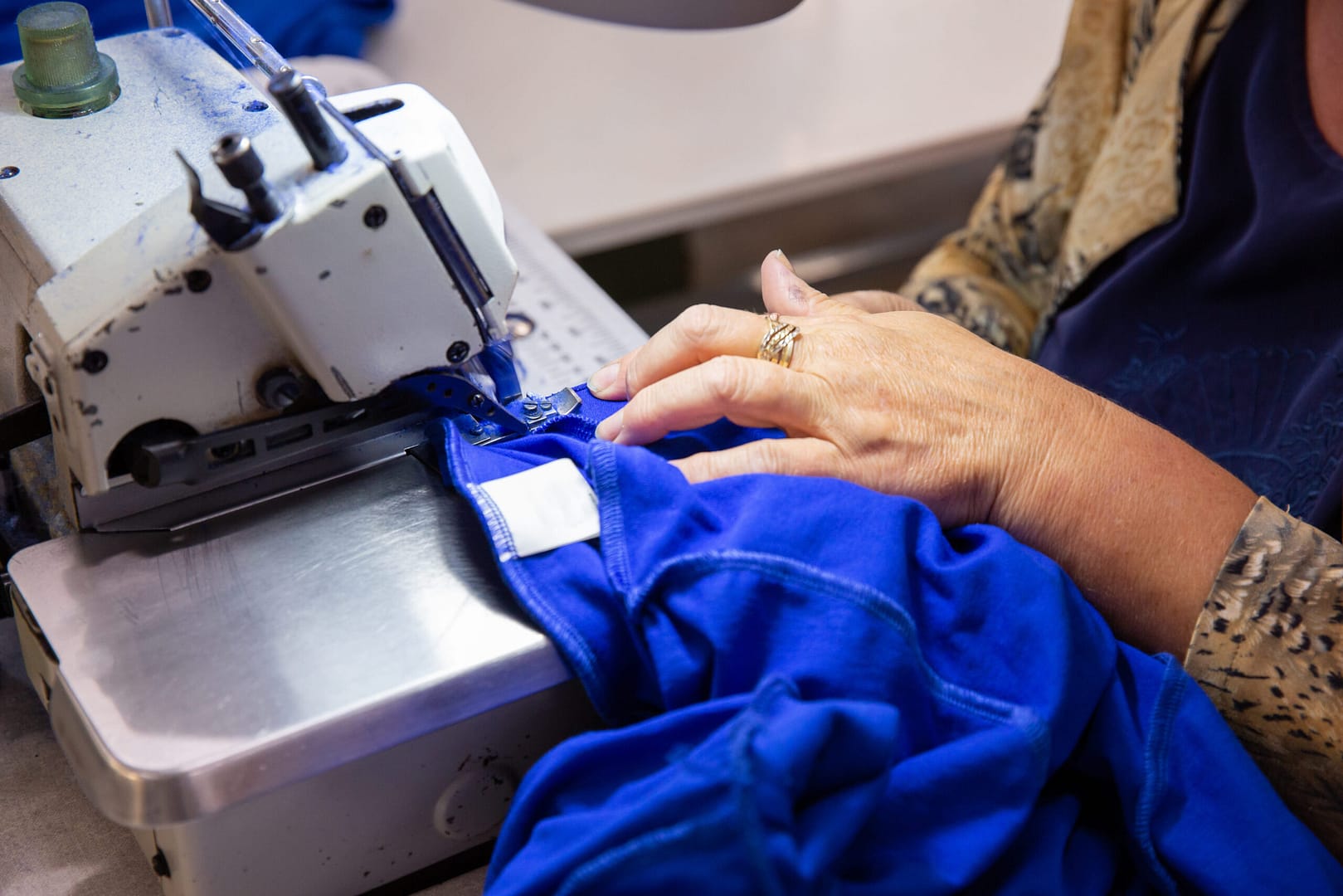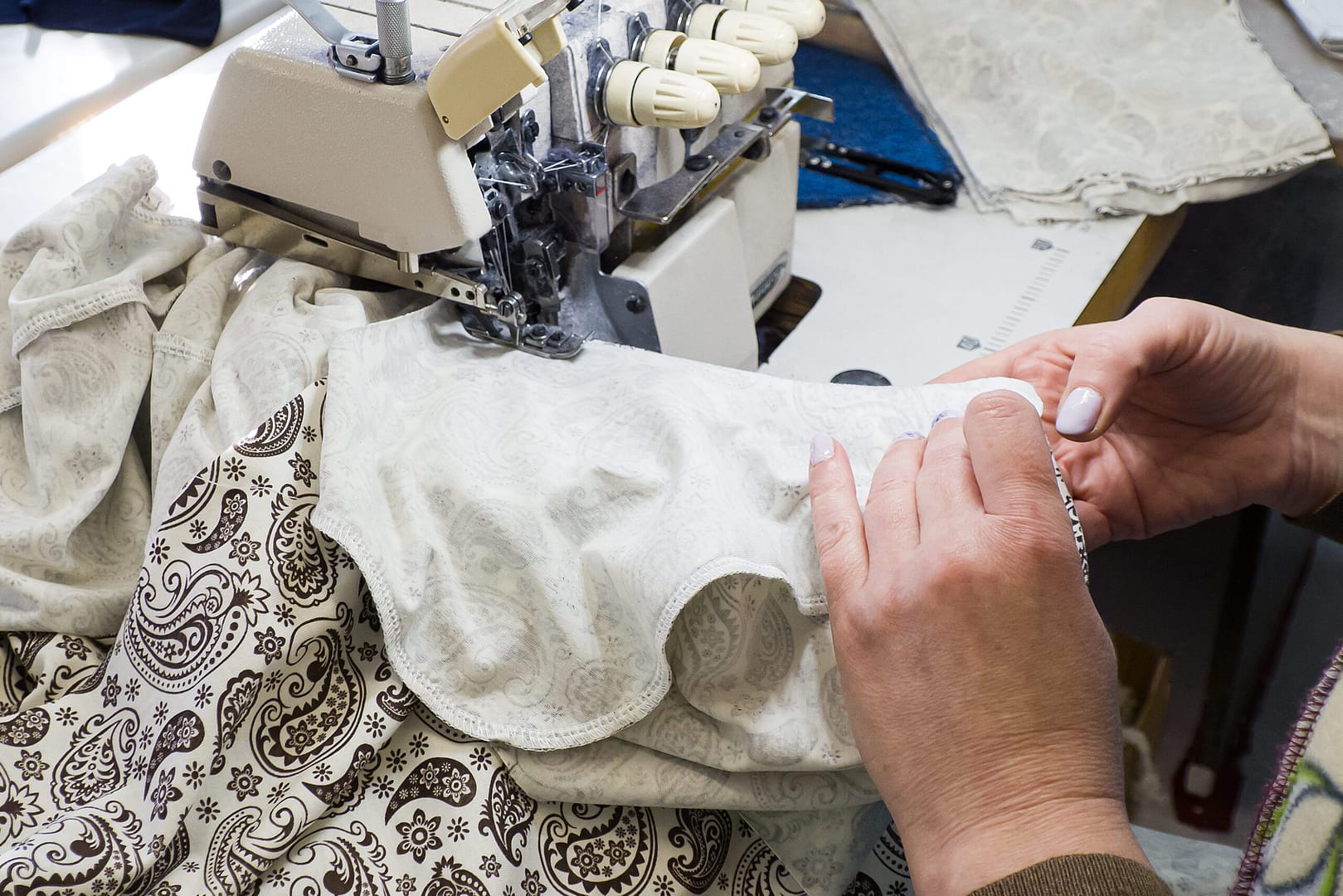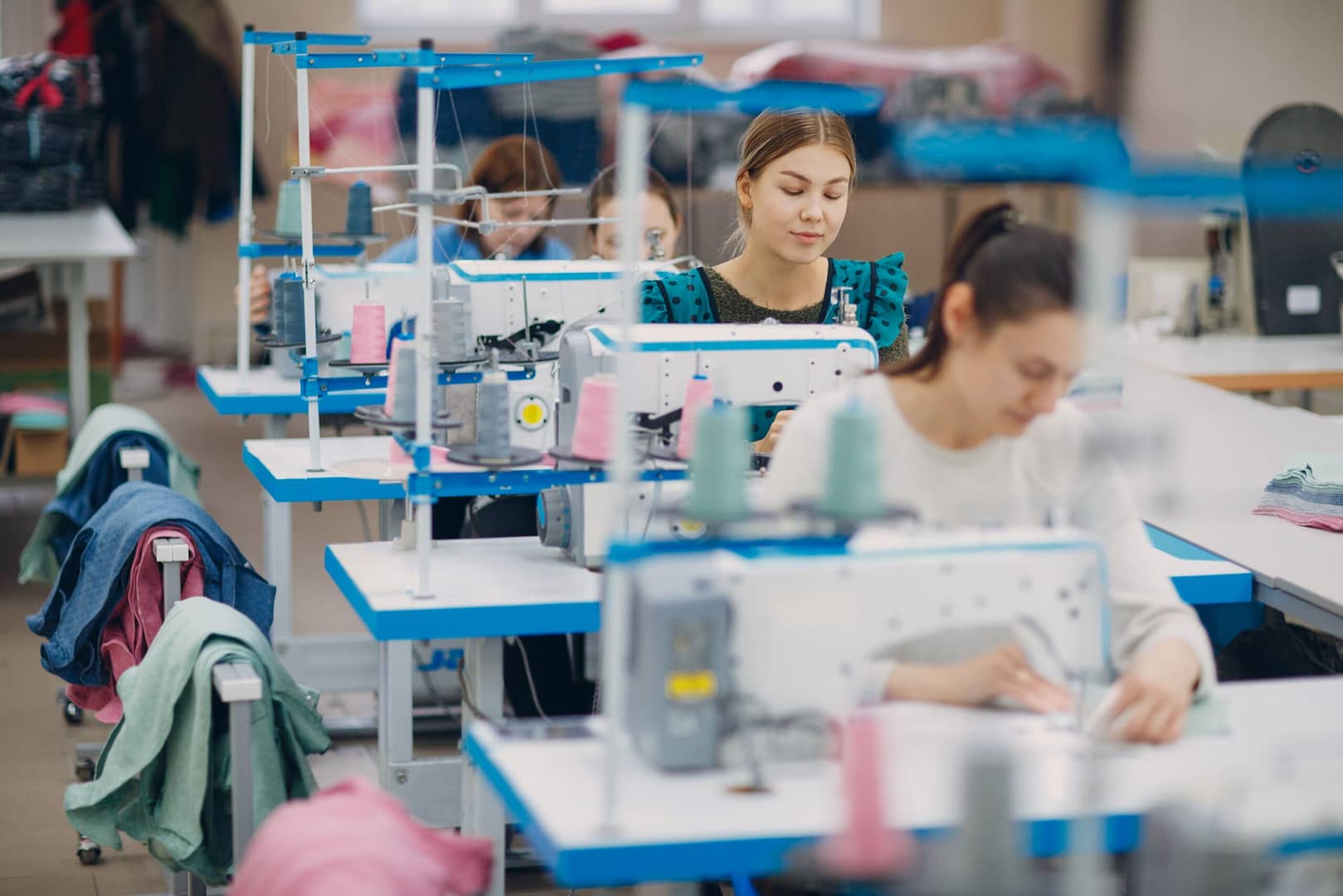| Fabric name | Cotton |
| Fabric also known as | Pima cotton, Egyptian cotton, Supima cotton |
| Fabric composition | Organic fibers from the seeds of the cotton plant |
| Fabric possible thread count variations | 100, 200, 300, 600, up to 2,000 |
| Fabric breathability | Very breathable |
| Moisture-wicking abilities | High |
| Heat retention abilities | Medium |
| Stretchability (give) | Medium |
| Prone to pilling/bubbling | High |
| Country where fabric was first produced | Ancient India |
| Biggest exporting/producing country today | India |
| Recommended washing temperatures | Medium or high |
| Commonly used in | Shirts, dresses, blouses, underwear, socks, sweaters, sheets, blankets, bags, jeans, skirts |
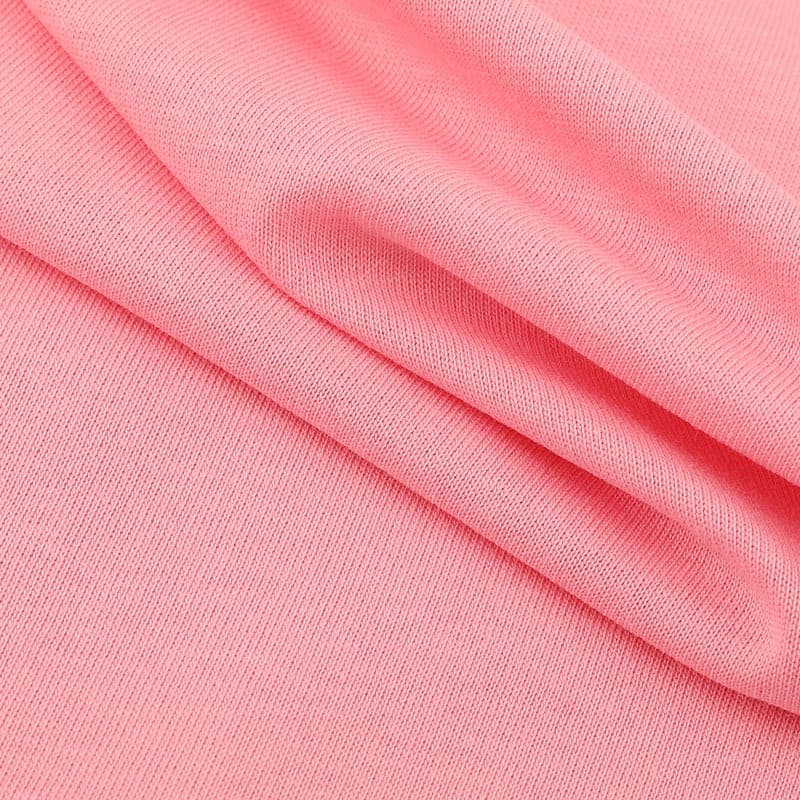
What Is Cotton Fabric?
Cotton fabric, the most widely produced natural fiber on the globe, originates from the fluffy fibers surrounding the seeds of cotton plants. These fibers are unique in their substantial length and visibility, making them distinct from other plant cells. Once the cotton plant flowers are fertilized, the fibers rapidly elongate, achieving most of their length within just 30 days. These long, hair-like cells can grow up to 2 inches, and once mature, they fill the seed pods to the brink, ready for harvesting.
The process of transforming these raw fibers into usable fabric is meticulous. After the cotton seeds are harvested, they undergo a separation process where the fibers are detached from the seeds. These individual fibers are then spun together, overlapping and twisting to form threads. The length of these fibers plays a critical role in the quality of the thread; longer fibers produce finer, stronger threads, leading to higher-quality fabrics with a greater thread count. This makes cotton fabric highly valued for its versatility in creating a range of textile products.
Chemically organic, cotton fabric contains no synthetic compounds and retains a natural white to slightly yellowish color. It is highly prized for its breathability, moisture-wicking properties, and the ability to maintain comfortable body temperatures, balancing the lightness of silk with the warmth of wool. Despite its susceptibility to wrinkling, pilling, and shrinking when not pre-treated, cotton’s durability and high tensile strength make it a staple in the textile industry, used extensively in everything from casual wear to high-end fashion.
Cotton’s inherent qualities—such as its absorbency, quick-drying capabilities, and ease of dyeing—contribute to its widespread use and enduring popularity in the fashion industry. Its ability to drape well on the body and withstand high washing temperatures further solidifies its status as a favorite fabric for a myriad of applications, from everyday attire to luxurious bed linens.
History of Cotton Fabric
The journey of cotton began over 7,000 years ago, with its roots tracing back to ancient civilizations in India, Egypt, and South America, where it was first cultivated and woven into fabric. These early cotton fabrics were prized for their natural whiteness and ease of dyeing, making them popular for clothing and decorative purposes.
In India, cotton was spun using simple tools, dyed with a range of natural pigments, and woven into intricate designs that are still celebrated today. Meanwhile, in Egypt, the moist climate along the Nile River Valley was perfect for growing the Gossypium barbadense species, known today as Egyptian cotton, which is famed for its extra-long staple fibers.
The Industrial Revolution in the 18th century marked a significant turning point for cotton. The invention of the cotton gin by Eli Whitney in 1793 revolutionized the production process by dramatically reducing the time needed to separate cotton seeds from raw fiber. This advancement paved the way for cotton to become a mass-produced commodity, fueling the textile mills of England and later spreading to the rest of the world.
Different Types of Cotton Fabric
The characteristics of cotton fabric, such as its texture, durability, and overall quality, are largely influenced by the type of cotton used. Understanding the different types of cotton can help in selecting the right fabric for various applications. Here’s a look at the common classifications based on fiber length:
Egyptian Cotton
Egyptian cotton, often referred to as the “White Gold” of the Nile, holds a storied reputation worldwide for being a top-tier cotton variety. Known for its extra-long staple length (exceeding 31.8 millimeters), Egyptian cotton features a distinctive silky luster and robust texture, which make it highly prized in the textile industry.
The cultivation of Egyptian cotton is concentrated along the Nile River and its delta—a region with ample summer sunlight, sparse rainfall, fertile soil, and excellent irrigation conditions, all of which are ideal for growing premium cotton. The fields are entirely irrigated with water from the Nile, leading to higher yields that consistently rank among the highest in the world.
Egyptian cotton varieties are diverse, with GIZA 70 being the most widely produced, accounting for about 75% of Egypt’s long-staple cotton production. GIZA 45, known for its superior length and physical properties, is less common but highly sought after for its exceptional quality. Egypt’s dominance in the market is further underscored by its substantial export volume, maintaining over 100,000 tons annually, which represents more than 50% of the global long-staple cotton production and exportation.
Pima Cotton
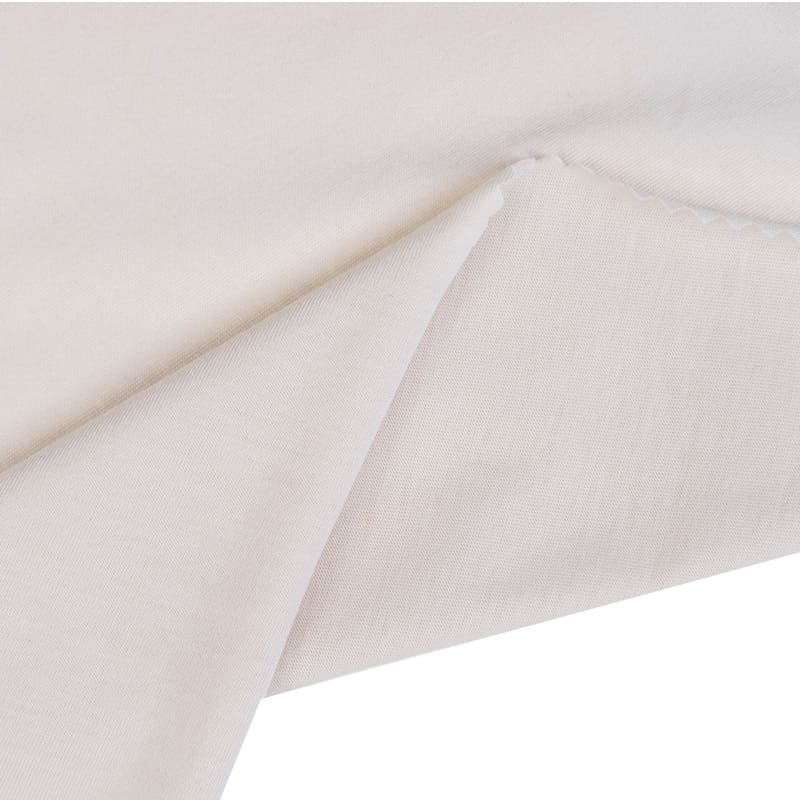
Pima cotton is renowned for its exceptionally long fibers, measuring about 40mm in length, which is approximately 35% longer than the fibers of standard cotton. This extended fiber length not only enhances the fabric’s durability by reducing surface friction and minimizing wear and tear, but it also significantly reduces pilling and fuzzing, making it a superior choice for high-quality textiles. The fibers’ smooth finish and reduced tendency to protrude from the fabric surface contribute to Pima cotton’s luxuriously soft feel and absence of static.
Moreover, the toughness of Pima cotton is about 45% higher than that of regular cotton, which allows it to weave into textiles that are not only smoother but also have better drape, enhancing the overall look and feel of the garments made from it. Additionally, Pima cotton excels in dye absorption, thanks to its ultra-long fibers, resulting in brighter, more vibrant colors that are highly resistant to fading. This combination of qualities makes Pima cotton a premium material, particularly suited for creating durable, luxurious, and visually striking textile products.
Supima Cotton
A trademarked name for American-grown extra-long staple (ELS) cotton, Supima is celebrated for its remarkable strength and vibrant luster. It represents the top tier of fine cottons in the United States, offering durability and a luxurious feel.
Sea Island Cotton
Sea Island Cotton, cultivated in the West Indies, is renowned as the “king of cotton” and the “gem of fibers” due to its unparalleled qualities. This cotton is celebrated for its silk-like luster and cashmere-like softness, making it one of the most prestigious and sought-after types of cotton in the world. However, growing, harvesting, and processing Sea Island Cotton are exceptionally challenging tasks, resulting in a very limited production. In fact, Sea Island Cotton constitutes only 0.0004% of the global cotton output, making it exceedingly rare and significantly more expensive than silk or cashmere.
Due to its exquisite properties and rarity, Sea Island Cotton has become the material of choice for high-end luxury brands such as Hermès and Ermenegildo Zegna. It is a symbol of luxury and exclusivity in the textile industry. Only cotton that meets the stringent standards set by the West Indian Sea Island Cotton Association (W.I.S.I.C.A.) throughout its entire cultivation to commercialization process is certified as authentic Sea Island Cotton. This certification is marked by a distinct label stating “West Indian Sea Island Cotton,” ensuring its authenticity and premium quality.
Short-Staple Cotton
With fibers up to 1.125 inches long, short-staple cotton is ideal for everyday use. It may not offer the same softness as finer varieties, but it is practical and commonly used in many textile products.
Long-Staple Cotton
Featuring fibers that range from 1.125 to 1.25 inches, long-staple cotton offers a touch more luxury than short-staple varieties, providing a good balance of softness and durability.
Extra-Long-Staple Cotton
The crème de la crème of cotton, extra-long staple varieties have fibers that exceed 1.25 inches, delivering unparalleled softness and luxury. This type of cotton is highly sought after for premium textiles and high-end fashion items.
Each type of cotton brings unique qualities to textiles, influencing everything from the feel and look to the durability and care requirements of the finished products.
Cultivation and Production Process

The journey of cotton from seed to fabric is a complex process that involves several stages, each critical to the quality of the final product. Here’s an overview of how cotton is cultivated and transformed into the fabric we use:
- Planting: Cotton is typically planted in the spring when the soil temperature reaches about 60°F. The seeds are planted in well-prepared soil, often in rows, to maximize sunlight exposure and reduce the growth of weeds.
- Growing: Cotton plants require a lot of sunshine, water, and nutrient-rich soil to grow. They are vulnerable to various pests and diseases, hence farmers often use integrated pest management techniques to protect the crops without excessive reliance on chemicals.
- Harvesting: Once the cotton bolls (the fluffy pods containing the seeds) mature and open up, the cotton is ready for harvesting. This usually occurs a few months after planting. Modern farms use mechanical harvesters that can pick the cotton from the bolls much more efficiently than manual picking.
- Ginning: After harvesting, the cotton must be cleaned, which involves separating the cotton fibers from the seeds and other debris. This process is done using a cotton gin, and the result is pure, raw cotton fiber ready for further processing.
- Spinning: The raw cotton fibers are then transported to mills where they are carded, combed, and spun into yarn. During carding, the fibers are disentangled and aligned; combing further straightens the fibers and selects the longer ones for finer yarns. Spinning twists the fibers into threads or yarns.
- Weaving or Knitting: The spun yarn is then woven or knitted into fabric. Weaving interlaces two sets of yarns at right angles to each other, whereas knitting involves looping the yarns together. The method chosen depends on the desired fabric characteristics.
- Finishing: Finally, the fabric undergoes various finishing processes such as bleaching, dyeing, and printing to enhance its appearance, performance, and texture. This stage can also include treatments for shrinkage control, wrinkle resistance, and other functional properties.
Properties of Cotton Fabric
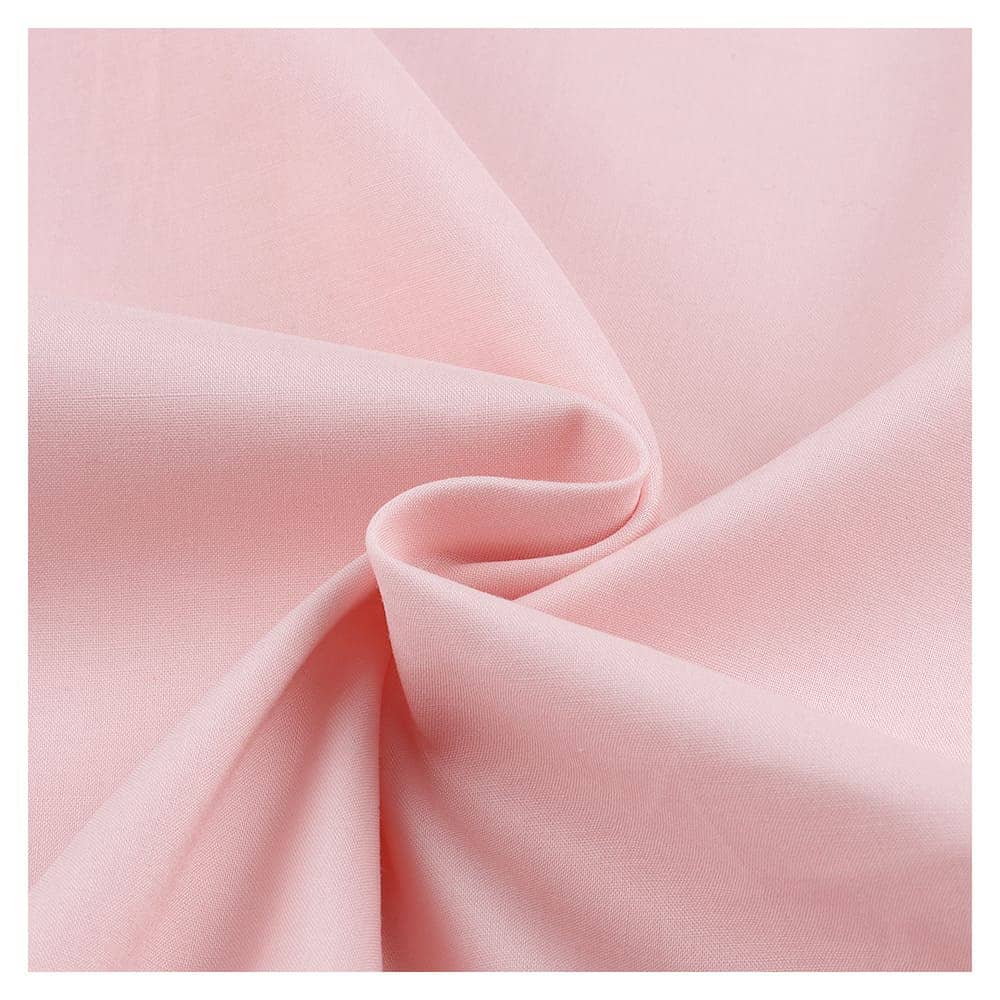
Cotton is cherished globally for its array of beneficial properties that make it suitable for a wide range of applications, from casual wear to high-end fashion. Here are some key properties that define cotton fabric:
- Breathability: Cotton’s natural structure allows air to circulate through the fibers, making it highly breathable. This property makes cotton garments extremely comfortable, particularly in warm weather, as it helps regulate body temperature by allowing heat to escape.
- Absorbency: Cotton can absorb up to 27 times its weight in water. This high absorbency makes it ideal for towels, bathrobes, and workout attire, as it efficiently wicks moisture away from the skin.
- Hypoallergenic: Cotton is naturally hypoallergenic, causing fewer allergic reactions than many synthetic fibers. This makes it an excellent choice for baby clothing, undergarments, and bedding, especially for those with sensitive skin.
- Durability: Cotton fibers are strong and can withstand high temperatures and repeated washing. This durability ensures that cotton products hold up over time, offering good value for consumers.
- Softness: Cotton is naturally soft, which enhances comfort and makes it a preferred fabric for everyday wear and luxury garments alike.
- Versatility: The versatility of cotton allows it to be blended with other fibers, such as polyester and elastane, to enhance certain characteristics like stretch and wrinkle resistance. This adaptability makes cotton suitable for a vast range of textile applications.
- Environmental Impact: While cotton is a natural and renewable resource, it is also criticized for its environmental impact, particularly concerning water consumption and pesticide use. However, advances in sustainable agriculture and organic cotton production are helping to mitigate these impacts.
Cotton in Fashion and Apparel Manufacturing
Cotton’s versatility makes it a staple in the fashion industry, suitable for a broad range of apparel from everyday casual wear to high-end fashion pieces. Its natural attributes and adaptability to various treatments make it a preferred choice for designers and manufacturers. Here’s how cotton is integral to fashion and apparel manufacturing:
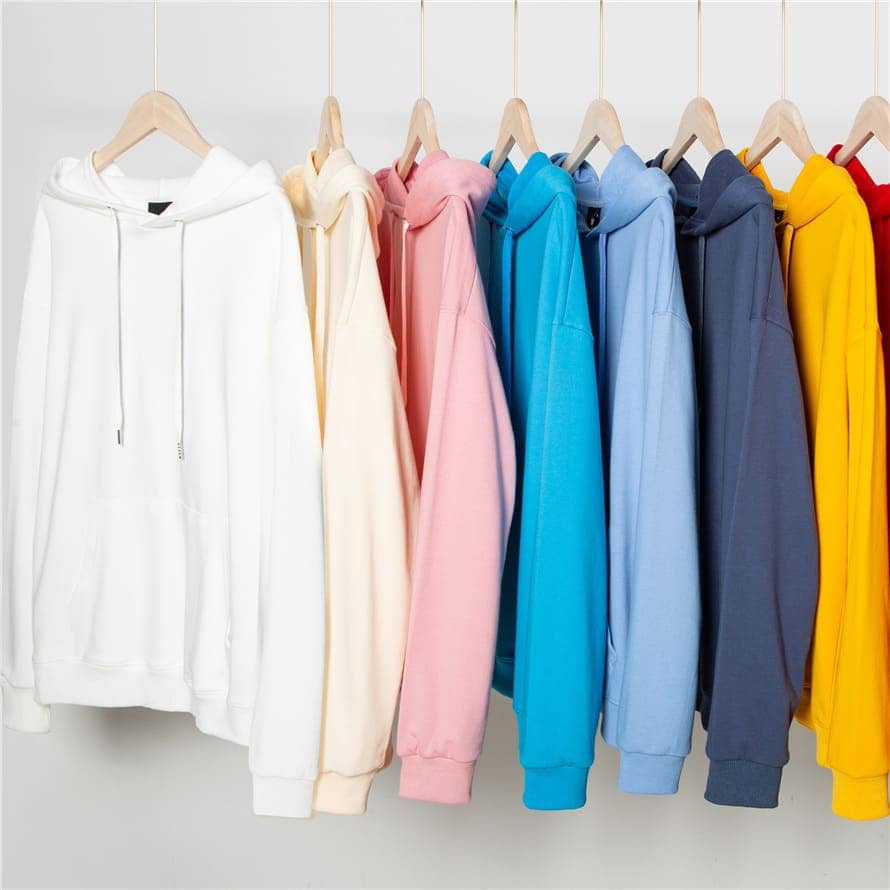
Casual Wear: Cotton’s comfort and breathability make it ideal for casual wear such as t-shirts, jeans, and dresses. Its ability to absorb dyes well allows for a broad range of colors and patterns, enhancing its appeal in the fashion industry.
Formal Wear: High-quality cotton, such as Egyptian or Pima cotton, is used in the manufacturing of formal wear like shirts and blouses. These types of cotton offer a smoother, shinier finish and a luxurious feel, making them perfect for professional and formal attire.
Sportswear: Cotton’s natural breathability and absorbency properties are advantageous in sportswear. Blended with synthetic fibers like polyester, it can offer the best of both worlds—comfort and moisture-wicking properties—making it suitable for active apparel.
International Standards and Certifications
To ensure compliance with quality expectations, several international standards and certifications have been established, such as:
- ISO (International Organization for Standardization): ISO standards for cotton testing specify methods for determining properties like fiber length, strength, and color.
- ASTM (American Society for Testing and Materials): ASTM provides a series of standardized testing methods for both raw cotton and finished cotton textiles.
- OEKO-TEX®: This certification tests textile products for harmful substances, ensuring safety in textile production.
- Global Organic Textile Standard (GOTS): GOTS certifies textiles made from organic fibers, ensuring ecological and social responsibility throughout the production chain.
Environmental Impact
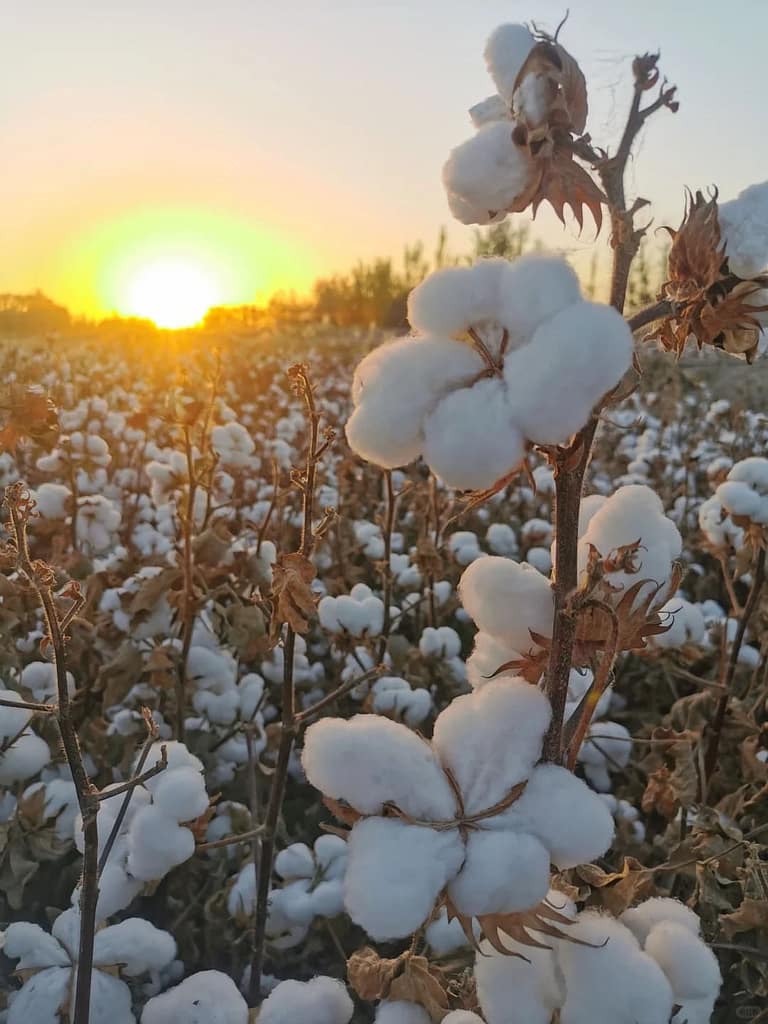
The production of cotton has significant environmental implications that must be considered by the industry. Although cotton is a natural and biodegradable fiber, its cultivation can be resource-intensive and environmentally challenging.
- Water Usage: Cotton farming is notoriously water-intensive. It is estimated that approximately 10,000 liters of water are needed to produce just one kilogram of cotton. This high water demand can lead to significant impacts on local water resources, especially in arid regions where water scarcity is already a critical issue.
- Pesticide and Fertilizer Use: Cotton crops consume about 16% of the world’s insecticides and 7% of pesticides, more than any other single major crop. These chemicals can have harmful effects on soil health, water quality, and biodiversity. The use of synthetic fertilizers also contributes to soil degradation and water pollution through runoff.
- Carbon Footprint: The cultivation, harvesting, and processing of cotton require substantial energy inputs, contributing to its carbon footprint. However, compared to synthetic fibers, cotton has a lower overall greenhouse gas emission profile.
Advances in Sustainable Cotton Production
In response to these challenges, the cotton industry has been making strides towards more sustainable practices:
- Organic Cotton: Grown without the use of synthetic pesticides, herbicides, or fertilizers, organic cotton aims to reduce environmental impact. It often uses less water than conventional cotton, as organic fields typically retain water more efficiently due to healthier soil.
- Better Cotton Initiative (BCI): The BCI promotes better standards in cotton farming and practices across 21 countries. It focuses on reducing the environmental impact of cotton production, improving livelihoods and economic development in cotton-producing areas, and providing traceability in the supply chain.
- Water Management Technologies: New irrigation technologies and water management practices are being developed to reduce the water footprint of cotton cultivation. These include precision agriculture techniques that ensure water is only used where and when it is needed.
- Integrated Pest Management (IPM): IPM strategies aim to reduce the reliance on chemical pesticides by promoting biological and cultural methods of pest control, which are less harmful to the environment.
Conclusion
Cotton has been an integral part of human culture and industry for thousands of years, and its future in the garment industry looks both promising and essential. As we advance, the key to maximizing cotton’s potential will lie in our ability to innovate sustainably and responsibly, ensuring that cotton continues to be a fabric of choice for future generations. Valtin Apparel remains dedicated to leading this charge, providing our clients and consumers with products that not only meet but exceed the standards of modern apparel manufacturing.
For more insights into cotton fabric and to explore our cotton-based products, visit us at Valtin Apparel.

